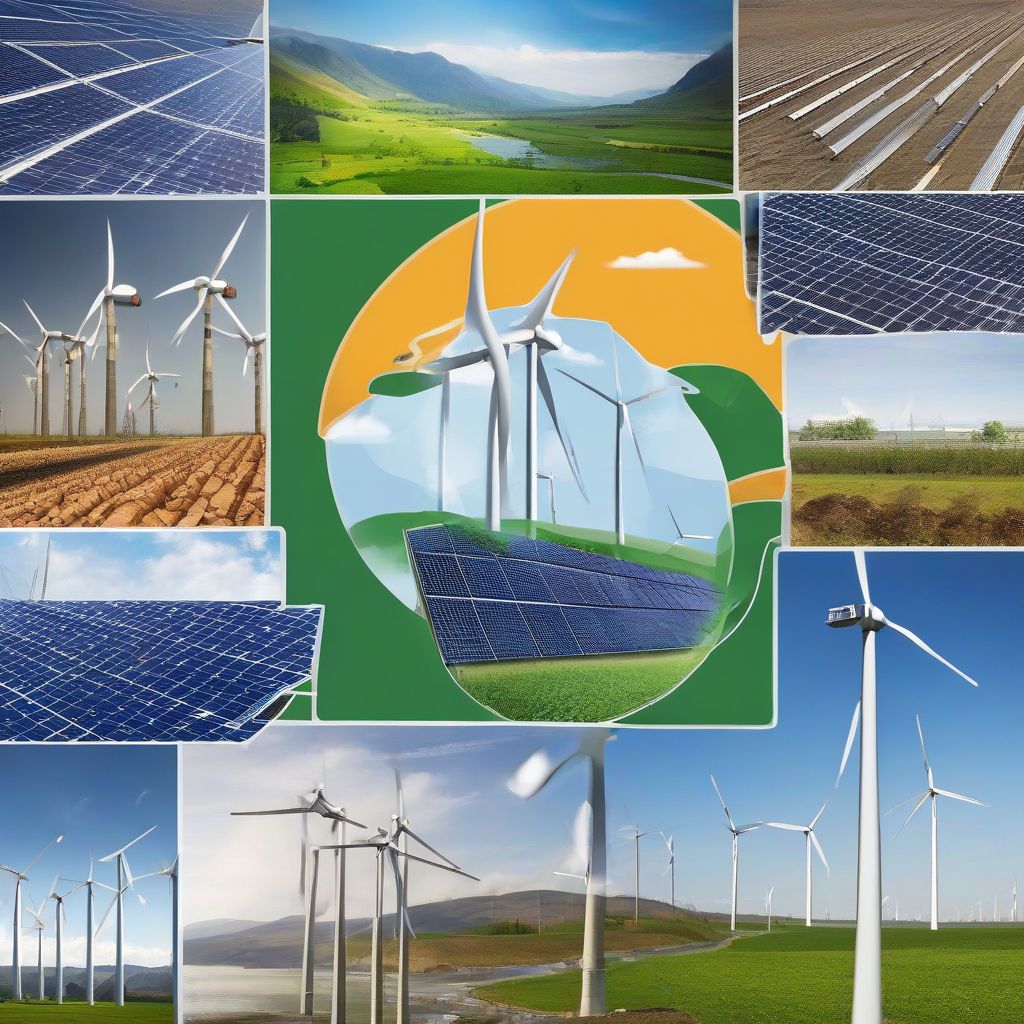Imagine a world powered by the sun, wind, and waves – a world free from the shackles of fossil fuels and their harmful emissions. It sounds like a utopian dream, right? Well, thanks to the remarkable rise of renewable energy, this dream is rapidly becoming a reality.
The Winds of Change: A Shift in the Energy Landscape
For decades, our energy needs were primarily met by burning fossil fuels like coal, oil, and natural gas. While these sources provided the energy to fuel our homes and industries, they came with a hefty price tag for our planet. Greenhouse gas emissions from these sources are a major driver of climate change, leading to more frequent and severe weather events, rising sea levels, and a host of other environmental challenges.
However, the energy landscape is undergoing a dramatic transformation. Renewable energy sources, like solar, wind, hydro, geothermal, and biomass, are steadily gaining traction, offering a cleaner and more sustainable alternative to fossil fuels. This shift isn’t just a fleeting trend; it’s a fundamental reshaping of how we produce and consume energy, driven by technological advancements, falling costs, and a growing awareness of the urgency to address climate change.
The Driving Forces Behind the Renewable Energy Revolution
Several key factors are accelerating the adoption of renewable energy across the globe:
1. Plummeting Costs: Making Renewables Economically Viable
Perhaps the most significant catalyst for the renewable energy revolution has been the dramatic drop in costs over the past decade. Technological advancements and economies of scale have made renewable energy technologies increasingly affordable, often rivaling or even surpassing the cost of fossil fuels in many markets.
2. Climate Change: The Urgency to Transition to a Sustainable Future
The undeniable reality of climate change is a powerful driving force behind the shift to renewable energy. Governments, businesses, and individuals are increasingly recognizing the need to reduce their carbon footprint, and renewable energy offers a viable path to a cleaner and more sustainable future.
3. Energy Security: Reducing Dependence on Fossil Fuels
Renewable energy sources offer countries greater energy independence and security, reducing their reliance on volatile global fossil fuel markets and potential geopolitical tensions.
 Renewable Energy Sources
Renewable Energy Sources
The Multifaceted Impact of Renewable Energy on the Energy Sector
The rise of renewable energy is not just about replacing dirty fossil fuels with clean alternatives; it’s fundamentally changing how the entire energy industry operates:
1. Decentralization of Energy Production: Empowering Consumers
Renewable energy technologies, particularly solar and wind, are enabling a shift from centralized power generation to more distributed energy systems. Rooftop solar panels, for instance, allow homeowners and businesses to generate their own electricity, reducing their reliance on traditional utilities.
2. Job Creation and Economic Growth: A Catalyst for Green Jobs
The transition to renewable energy is creating a wealth of new job opportunities in manufacturing, installation, maintenance, and research and development, bolstering economic growth in communities embracing these technologies.
3. Grid Modernization: Integrating Renewables into Existing Infrastructure
Integrating large-scale renewable energy sources into existing power grids requires significant modernization efforts, including smart grid technologies, energy storage solutions, and improved grid management systems.
Challenges and Opportunities on the Path to a Renewable Energy Future
While the future of renewable energy is bright, several challenges must be addressed to fully realize its potential:
1. Intermittency: Addressing the Fluctuating Nature of Renewables
Solar and wind power are inherently intermittent, meaning their output fluctuates depending on the time of day and weather conditions. Overcoming this intermittency challenge requires advancements in energy storage solutions, such as batteries and pumped hydro, to ensure a reliable and consistent energy supply.
2. Public Acceptance and Policy Support: Fostering a Favorable Environment for Renewables
Public acceptance and supportive government policies play a crucial role in accelerating the deployment of renewable energy. Incentives, tax credits, and streamlined permitting processes can encourage investment and adoption.
[amazon bestseller=”Renewable Energy”]
The Future is Bright: Embracing the Renewable Energy Revolution
The transition to a renewable energy future is not a question of “if” but “when.” The economic, environmental, and social benefits of renewable energy are too compelling to ignore. As we continue to innovate and invest in these technologies, we can create a cleaner, more sustainable, and prosperous future for generations to come.
